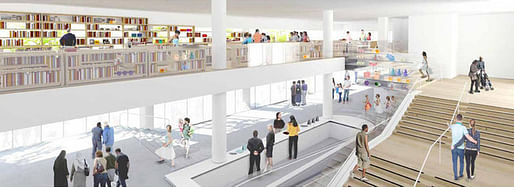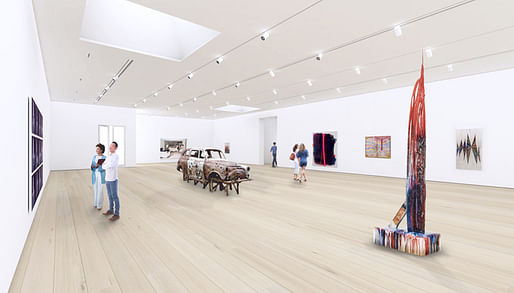
After transforming from a cramped adjunct space to a fully fledged L.A. cultural hotspot in just a few decades, the Hammer Museum is expanding again thanks to Michael Maltzan, who has been gradually increasing and renovating the Hammer over the years via The Billy Wilder Theatre, the expanded public courtyard (featuring Heatherwick Studio's ever delightful spool chairs), and the John V. Tunney Bridge. Based on his past work for the museum, he's able to create aesthetically powerful spaces in fairly constrained circumstances. The new renderings, while not mind-blowing in of themselves, promise a continuance of his detailed, culturally attuned work.


Perhaps the most exciting element of the new design is the pronounced pedestrian entrance on Wilshire Boulevard. Currently, museum goers often enter through the frankly unimpressive subterranean parking garage, or the staircase-heavy entrances on Lindbrook or Wilshire. This nod toward greater accessibility will hopefully not only perk up the surrounding street life, but also work in tandem with the forthcoming purple line Metro stop. In addition to significantly revamping the Wilshire street entrance of the museum, the new expansion will also increase the existing gallery space by 60%, and add 20,000 square feet of community spaces. UCLA's purchase of the neighboring 1962 Occidental Petroleum tower will allow the Hammer to move its administrative offices into the upper floors of that tower while opening up more room for publicly accessible galleries.

3 Comments
I guess this is okay (better than what exists now), but I don't think it's particularly remarkable given the caliber of the designer
Im sure the media will love it .... the pinnacle of narratives
Maltzan's work is terrible - white stucco, oddly proportioned and formally awkward...this thing just looks like some westwood sephora, then again, the hammer building sucks, what they need to do is move.
Block this user
Are you sure you want to block this user and hide all related comments throughout the site?
Archinect
This is your first comment on Archinect. Your comment will be visible once approved.